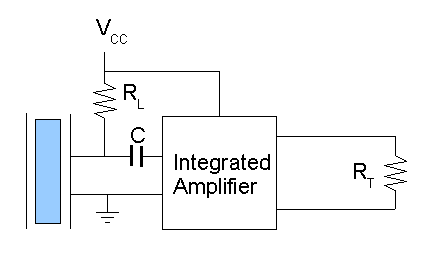Q10042 Capturing audio signals with microphones
Is it possible to capture audio signals using electret microphones?
Not only possible, it is possible on a grand scale. See the article cited in the references.

The most straightforward way to connect microphones is illustrated
in the circuit diagram. Electret microphones are available as an
unpowered cartridge, but more commonly include a tiny integrated
solid-state amplifier, without much cost difference. The power gain of the
amplifier boosts the signal at the source, which is a big advantage
for accurate signal transfers and data capture. The amplifier
requires a trickle of power, typically a few milliamperes, from a power
supply typically 9 to 18 volts – check your device specifications
for the proper voltage level. The loading resistance
RL is chosen as a best impedance match for the
cartridge section. The coupling capacitor of 1 to 10 µF often
is integrated into the microphone module. The transfer is through an
unbalanced differential signal, avoiding noise pickup through a
ground loop path. The termination resistance RT
is typically about 100K, to provide a charge leakage path for the input
converter devices.
An ICP configuration is also possible, in which the
sensor amplifier is powered from the receiving end.
L-----
http://www.acoustic-imaging.com/array.html describes a large-scale 3-D acoustic imaging project measuring jet airplane wake vortices.
